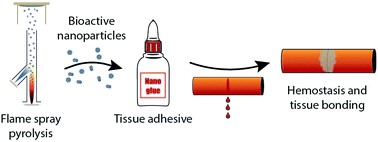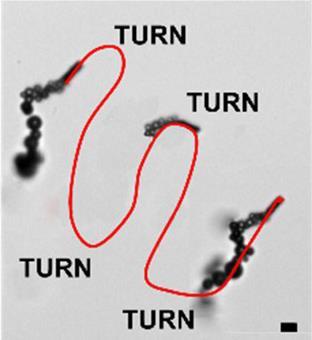The need for tough, easily producible, tissue adhesives for medical applications is significant, and much recent research has focused on this expanding field. Surgical and wound care complications remain a major cause of post-operative mortality. Materials used for these applications need to withstand various mechanical deformations and movements while remaining strongly attached to the intended tissue.
A simple route to tissue adhesives has recently been described involving silica nanoparticles acting as physical adhesive layer between tissues. New research from the Hermann group at the Swiss Federal Laboratories for Materials Science and Technology has expanded upon this concept with a new article published in Nanoscale. The researchers produce a library of inorganic oxide nanoparticles using a scalable and sterile flame spray pyrolysis method. The particles are then used study how different combinations of nanoparticles affect performance as tissue adhesives and also the toxicity of the resulting tissue adhesive materials.
An optimal composition of a mixture of bioglass and silica nanoparticles were found to have exceptionally strong procoagulant and adhesive properties whilst also maintaining superior cyto-compatibility. This highly modular synthetic method paves the way for use of metal oxide nanoparticles as bioactive adhesives in a range of exciting surgical and regenerative medicine applications.
Fig. 1. Inorganic nanoparticles and their use as tissue adhesives
Alexander Cook is a guest web writer for the RSC journal blogs. He is a PhD researcher in the Perrier group at the University of Warwick, focusing on polymer materials and their use in various applications. Follow him on twitter @alexcook222













